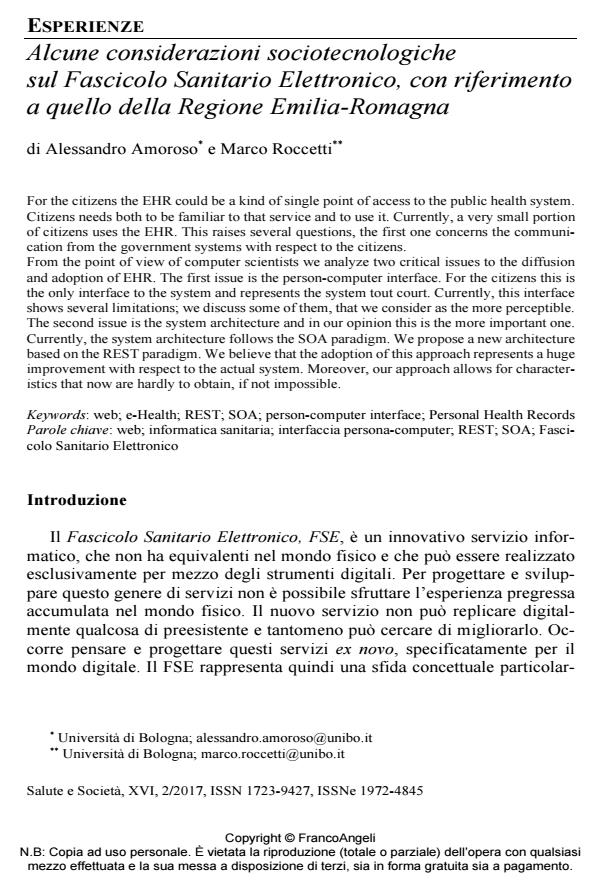Alcune considerazioni sociotecnologiche sul Fascicolo Sanitario Elettronico, con riferimento a quello della Regione Emilia-Romagna
Journal title SALUTE E SOCIETÀ
Author/s Alessandro Amoroso, Marco Roccetti
Publishing Year 2017 Issue 2017/2
Language Italian Pages 28 P. 97-124 File size 664 KB
DOI 10.3280/SES2017-002008
DOI is like a bar code for intellectual property: to have more infomation
click here
Below, you can see the article first page
If you want to buy this article in PDF format, you can do it, following the instructions to buy download credits

FrancoAngeli is member of Publishers International Linking Association, Inc (PILA), a not-for-profit association which run the CrossRef service enabling links to and from online scholarly content.
For the citizens the EHR could be a kind of single point of access to the public health system. Citizens needs both to be familiar to that service and to use it. Currently, a very small portion of citizens uses the EHR. This raises several questions, the first one concerns the communication from the government systems with respect to the citizens. From the point of view of computer scientists we analyze two critical issues to the diffusion and adoption of EHR. The first issue is the person-computer interface. For the citizens this is the only interface to the system and represents the system tout court. Currently, this interface shows several limitations; we discuss some of them, that we consider as the more perceptible. The second issue is the system architecture and in our opinion this is the more important one. Currently, the system architecture follows the SOA paradigm. We propose a new architecture based on the REST paradigm. We believe that the adoption of this approach represents a huge improvement with respect to the actual system. Moreover, our approach allows for characteristics that now are hardly to obtain, if not impossible.
Keywords: Web; e-Health; REST; SOA; person-computer interface; Personal Health Records
Alessandro Amoroso, Marco Roccetti, Alcune considerazioni sociotecnologiche sul Fascicolo Sanitario Elettronico, con riferimento a quello della Regione Emilia-Romagna in "SALUTE E SOCIETÀ" 2/2017, pp 97-124, DOI: 10.3280/SES2017-002008